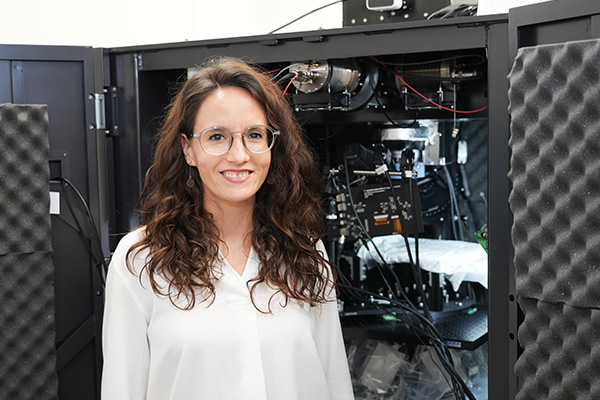Oct. 10, 2024
Understanding speech, from monkeys to humans
Cristina Risueno Segovia, Special Postdoctoral Researcher
Please describe your role.
I am a Special Postdoctoral Researcher at RIKEN focusing on the neocortical circuits and physiological states behind active control of vocal behavior in marmosets. My Ph.D. research explored the evolutionary origins of human vocal capabilities by studying vocal communication systems in non-human primates, particularly in marmoset monkeys. At RIKEN, I am combining my expertise in vocal communication with the cutting-edge techniques available within Masanori Matsuzaki’s lab to investigate the neuronal networks and physiological states linked with vocal signaling.
What has been the most interesting recent discovery in your field?
One of the most interesting recent discoveries in my field is the shift in understanding of monkey vocalizations. For decades, these vocalizations were considered stereotypical and inflexible, merely reflecting inner emotions. However, recent research has revealed that the vocal systems of non-human primates are more dynamic than previously thought, suggesting that they may exhibit pre-adaptations to human speech. This discovery opens up new possibilities for studying the cognitive mechanisms that might be shared between human speech and primate vocal communication.

Please briefly describe your current research.
To navigate the increasing populations of social groups, such as those seen in humans and monkeys, communication is vital. However, we know very little about how human speech originated and evolved. Surprisingly, the muscles of the larynx and vocal tract, and their primary nervous supply, are shared among mammals, as well as their controlling structures in the lower brain. So, what can we learn from our monkey cousins about how rudimentary forms of communication turn into intricate vocal systems? Studying primate communication might help us understand the evolutionary trajectories of human speech and contribute to the improvement of human speech disorders.
What made you decide to become a scientist?
I originally planned to become a physiotherapist. But during my bachelor’s degree I encountered two very inspiring medical professors who were teaching anatomy and physiology. The lectures and practical courses were fascinating. So I started a second bachelor’s degree in biochemistry and biomedical science that was more research oriented and decided to pursue a scientific career.
What technologies do you use to conduct your research?
The Brain Functional Dynamics Collaboration Laboratory at RIKEN has developed protocols to train animals during the performance of complex motor tasks, while simultaneously imaging calcium signals in vivo. Two-photon calcium imaging is used to reveal neuronal activity in the motor cortex at single cell resolution in marmosets. It is also a privilege to have the chance to use invariant two-photon microscopy (FASHIO 2PM), a technology Masanori Murayama developed with NIKON company that allows clear calcium imaging for long periods (more than 100 days).
Rate this article

